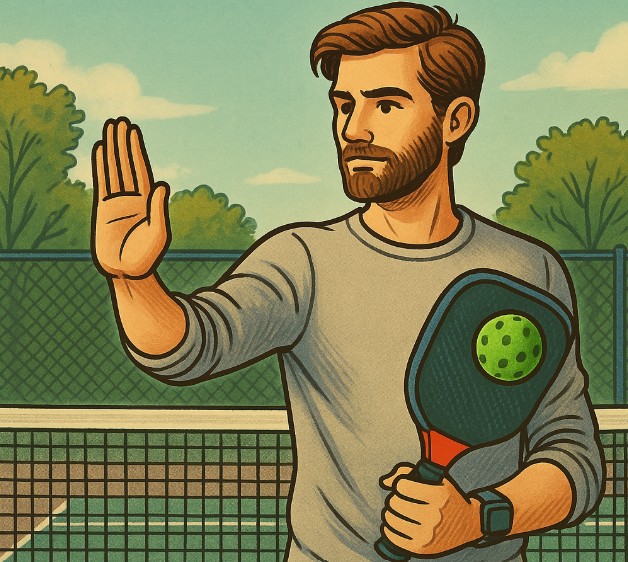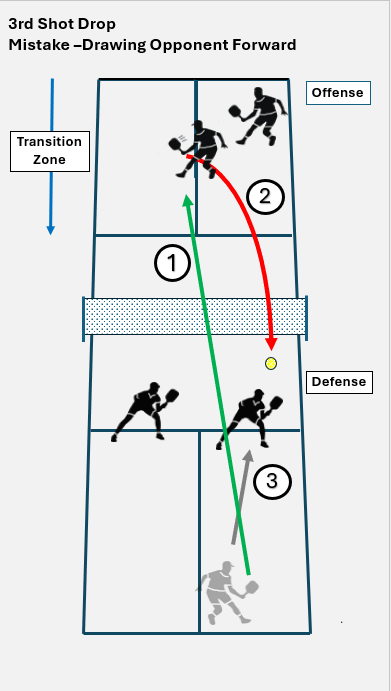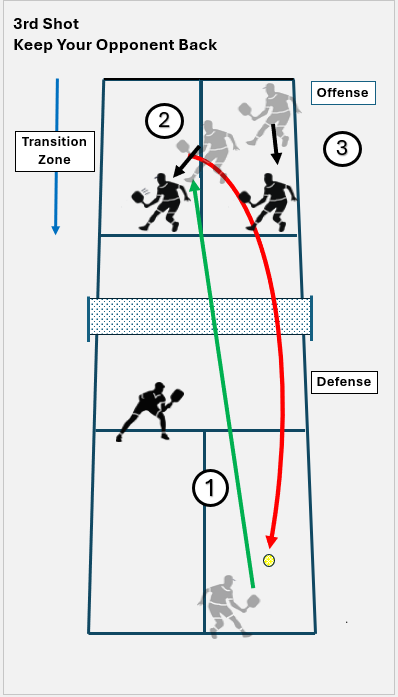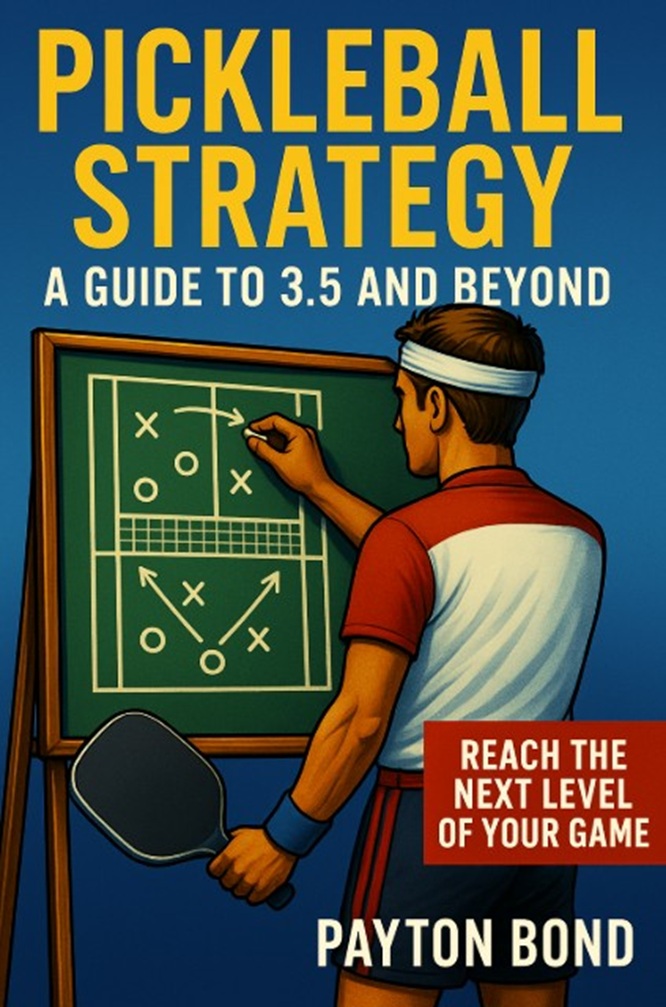
When you first start incorporating drop shots into your pickleball game, it’s easy to get a bit obsessed—like the person who just discovered avocado toast and now puts it on everything. But here’s the catch: one of the most common mistakes isn’t just mishitting a drop shot; it’s using it at the wrong time.
Let’s not forget, in pickleball, the defense starts the point with a pretty sweet deal. They’ve already got one player at the kitchen line, while you and your partner—on offense—are still hanging out at the baseline. To keep their advantage, the serve returner on defense needs to hit a strong return of serve and hustle up to join their partner at the net. Once both defenders are at the kitchen line, the defense locks down the court like it’s their fortress, making it tough for the offense to break through—just as the game is designed.
For the offensive team, the goal is to figure out how to advance and engage those defenders at the net. As covered in the third shot drop posts, the drop shot is the go-to move for closing the gap and neutralizing the defense when both opponents are already stationed at the kitchen line. But—and this is where things get interesting—if you can keep the serve returner back by driving a shot at them after they hit a short return of serve, you’ve just opened the door to take immediate control of the point. Skip the drop shot, drive the ball and move in fast to flip the script.
If you landed here from a search and feel this content lacks context, check out the foundational post on the Third Shot Drop:
Pickleball Third Shot Drop – Your Best Third Shot Option
Mistake: Hitting a Drop Shot and Drawing Your Opponent Forward
In the illustration below a drop shot is hit back to the serve returner after they hit a short return and haven’t reached the kitchen line. This is usually a mistake.

Scenario:
- Your opponent returns your serve, and it’s a short return.
- You advance, fixated on executing a drop shot, and hit a drop shot to the open area in front of the serve returner, thinking they won’t reach it in time.
- After their short return, your opponent hesitates to advance, expecting you might drive the ball. However, when they see your drop shot, they rush in, hitting a forceful shot or dink back at you. This invites them to the kitchen line, exactly where they want to be after returning the serve.
Why This is a Mistake
Picture this: your opponent serves you up a short return—a gift-wrapped opportunity to drive the ball and keep them back. But instead of taking the gift and running with it, you decide to drop the ball just over the net. Congratulations! You’ve handed the gift right back, complete with a bow, and invited them to stroll up to the kitchen line like they own the place.
Driving the ball forces them to stay back. But by hitting a drop shot, you essentially said, “Oh, I insist, please come up to the kitchen!” Worse yet, if your drop shot isn’t great and pops up, the other opponent already at the kitchen line will gleefully poach the shot and leave you muttering, “Why did I do that?”
A well-placed drop shot can be effective in certain situations, but in this case, it allowed your opponent to regain control and erased the advantage you could have maintained.
The Correct Play
When your opponent sends you a short return and is still stranded in no-man’s-land:
- Drive the ball back at them. Make them feel the pressure of staying back and the panic of being caught out of position.
- Don’t help them out! Giving them the chance to waltz up to the kitchen is like handing them a VIP pass to the party. Keep them back, and you’ll be the one in control.
In the illustration below, you see the proper way to handle this. A crisp drive to the feet of the returner not only keeps them on their toes (literally) but also allows you and your partner to advance to the kitchen line and start dictating the point. This is how you go from reactive to proactive—pickleball style!

Scenario:
- Your opponent returns your serve, and it’s a short return.
- You advance quickly and drive the ball back at the serve returner who is still relatively deep in the service court.
- You and your partner advance quickly to the kitchen line and take control of the point.
Summary
Sharpening your court awareness allows you to seize opportunities and make confident, strategic choices for your third shot.
Rather than defaulting to a drop shot out of habit, assess the situation and choose the option that keeps you in control and puts your opponent on the defensive. Smart decisions win points—and matches!
Check out Payton Bonds new eBook!
Pickleball Strategy – A Guide to 3.5 and Beyond
See it on Amazon.

👤 Follow Payton Bond
All Star and Top Contributor on multiple Facebook Pickleball Forums.
Contributor at TheKitchenPickle.com.
Visit Payton Bonds Facebook Page

